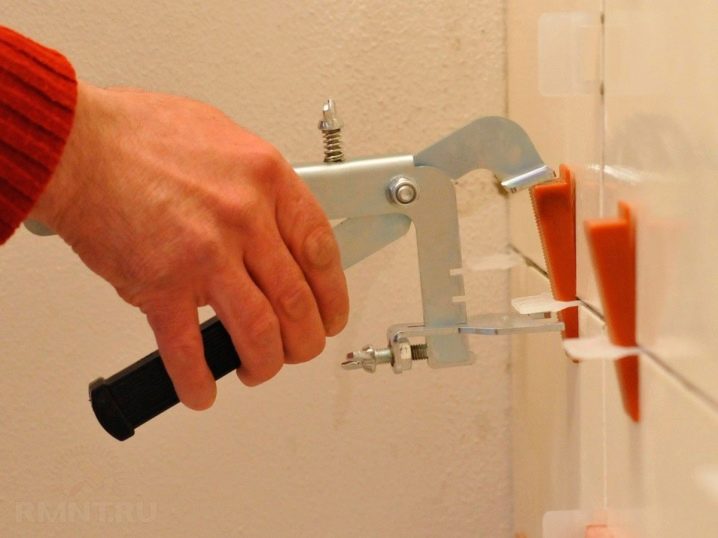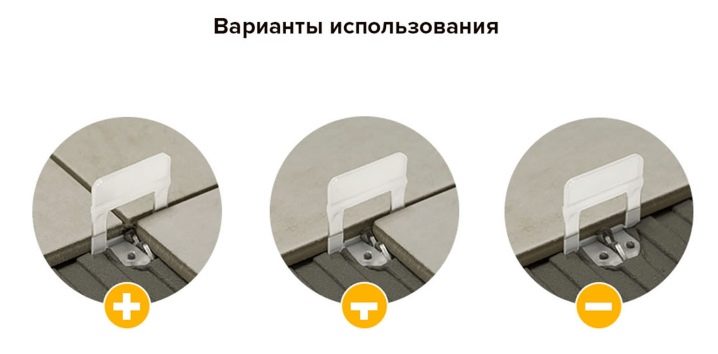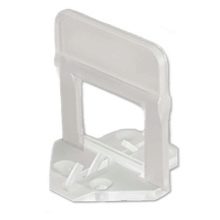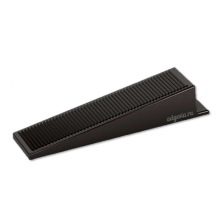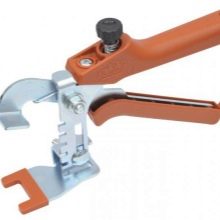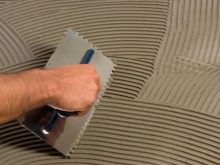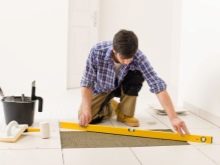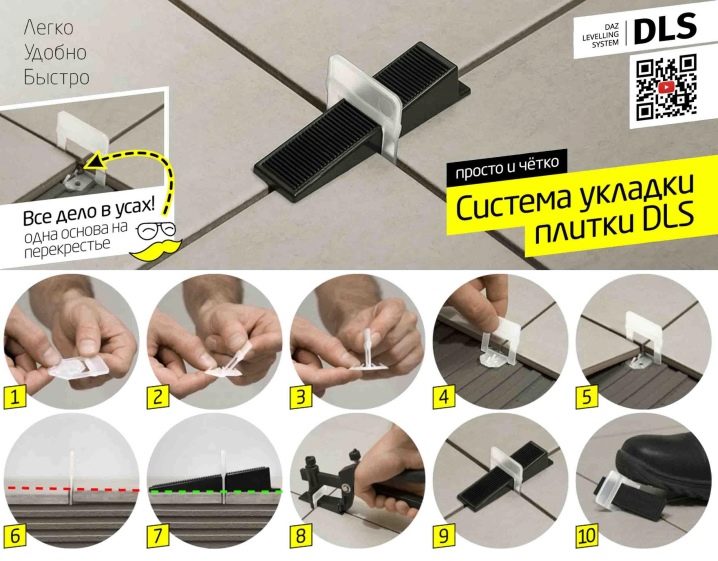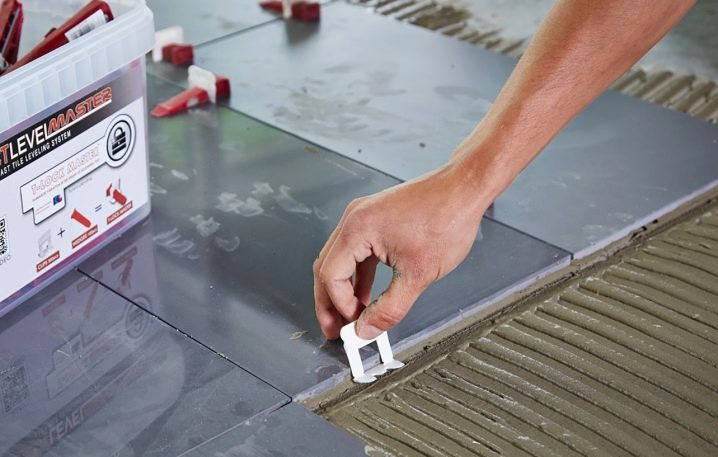DLS tile laying system: the pros and cons
There are many techniques for laying tiles. They are used in apartments, private homes, offices and public institutions. Making the process simpler allows the DLS system. It makes it possible to lay tiles with a thickness of 3 mm to 2 cm perfectly flat and to avoid drops in the joints.
Method of work
The DLS system makes installation work much easier. It allows you to even lay tiles even in the most difficult conditions, not taking into account the screed and the amount of glue. When using DLS, there will not be such a major problem as the displacement of parts during operation. You can also not worry about sinking tiles. The DLS system allows you to reduce the laying time by half, which is extremely important when working with large areas.
Before work it is necessary to check the evenness of the coating itself.If you deal with this before installation, in the process of laying problems will not arise. There are three known methods of laying tiles, when DLS can and should be used:
- fixing one tile - minus method;
- fixing two tiles - method "T";
- fixing four tiles - plus method.
The DLS system consists of several structural elements. These include plastic inserts in the amount of at least hundreds of pieces and wedges, the number of which must coincide with the number of inserts. They are threaded into inserts, which are aligned with a special clamp. The clamp is the main tool.
The first step before installing the tile is to apply the adhesive to the surface on which it will be laid. Next comes the installation itself. It is important to properly put the first tile. For this you must use a level. From the position of the first tile will depend on the evenness of the entire surface.
They fasten all elements with inserts, insert wedges into them. A clamp is then used to make the entire surface smooth. When the glue dries, and the tile is firmly set, it is necessary to remove all the inserts with wedges.If any wedges are stuck, you can gently knock them out with a hammer. Using the DLS system is almost always justified.
It is especially convenient to use it when working with large tiles (for example, 70x70 cm). On tiles of a larger area, the distortions are not immediately noticeable even to a professional, especially to a beginner.
Pros and cons of the system
Making tiles absolutely flat is the dream of every builder, and the DLS system makes this dream much closer. Consider the pros:
- DLS allows you to work with floor and wall tiles. For wall plates, the principle is this: first, make the bottom row flat, then the entire surface is leveled from it.
- This system saves time. The process is faster in two or even four times.
- Uniform position of the solution under the tile. This eliminates bumps during installation.
- You can install in a certain position every single element.
- Wedges can be used more than once. The same applies to the clamps.
- After the work there is little garbage.
- Anyone can work with DLS, for this it is not necessary to be a professional.
- Lack of work with crosses, as with conventional technology.
- When using the DLS system seams are not formed.This avoids the failure or shear of the tile during installation.
However, there are negative sides to the DLS system:
- The high price of component parts sometimes leads to the use of familiar technology.
- Adjustment of the tile must be completed during the time before the glue has dried.
When buying parts you need to pay attention to the fact that there are fakes on the market. It should be borne in mind that the high cost justifies itself: the DLS system is cheaper than the payment of work for professionals.
Reviews
Among the feedback from users of the Internet there are positive and extremely negative comments. Most often they write that it is difficult to find parts for such a system in regular stores. We have to order them over the Internet, which requires a certain time.
Those lucky ones who have acquired the DLS system, emit a large number of advantages. Especially often leave detailed reviews of those who work with tiles for a long time. This allows them to compare traditional methods and this system. The advantages of new technologies like DLS become noticeable only when working with large tiles, or over large areas. In the case of a properly made foundation in a small area, the time gain will be minimal.
Also in the reviews they write about the need to check the evenness of each element, which also takes a lot of time. Often, due to one uneven tile, all the alignment work can be wasted in the absence of a similar replacement part. Attention should be paid to the adhesive composition that is used in the process, to which the masters pay attention.
In general, you can not blindly rely on such a system and believe that it will do absolutely everything for you. It is necessary to correctly prepare the base, distribute the glue. Equally important is adherence to technology and accuracy. In this case, in the form of a DLS system or any equivalent, you will get a great helper when working with tiles.
For how to tile using DLS, see the following video.

